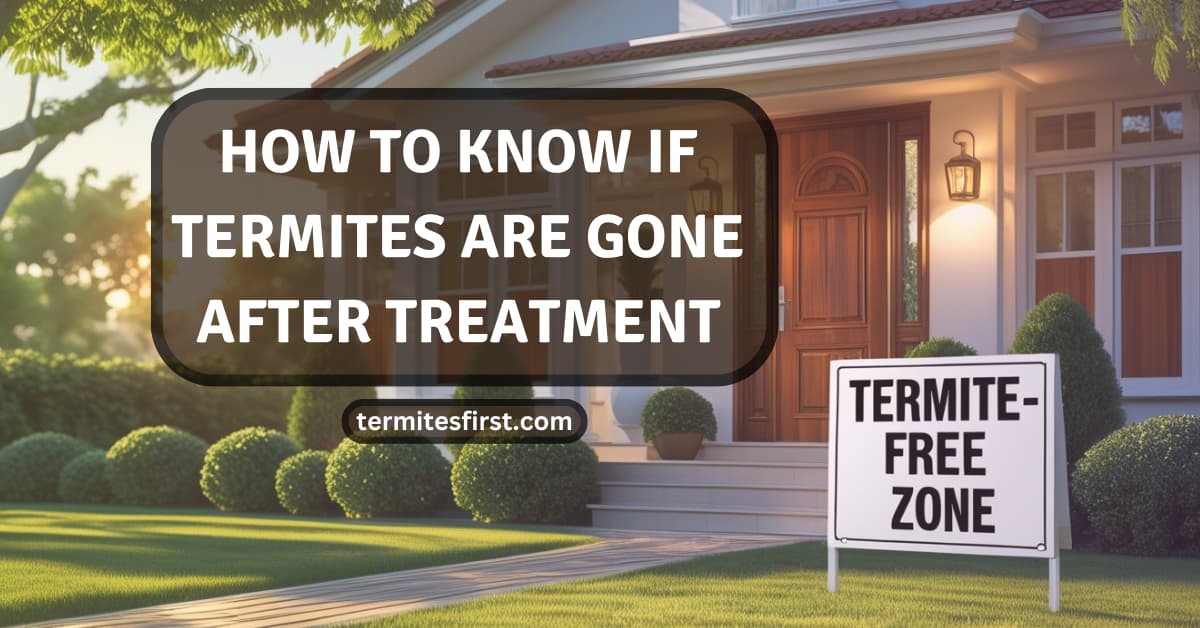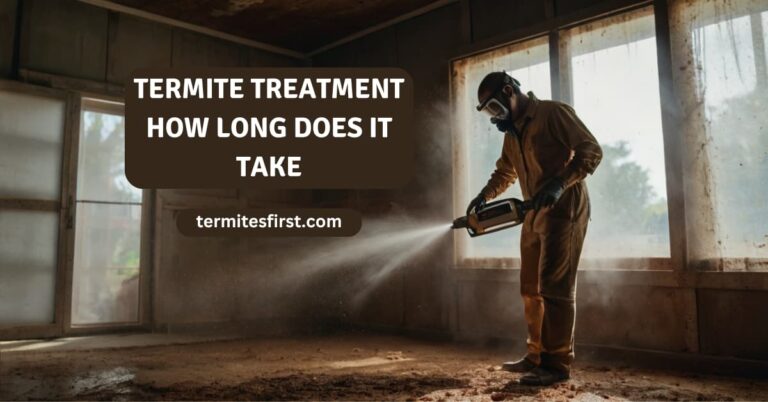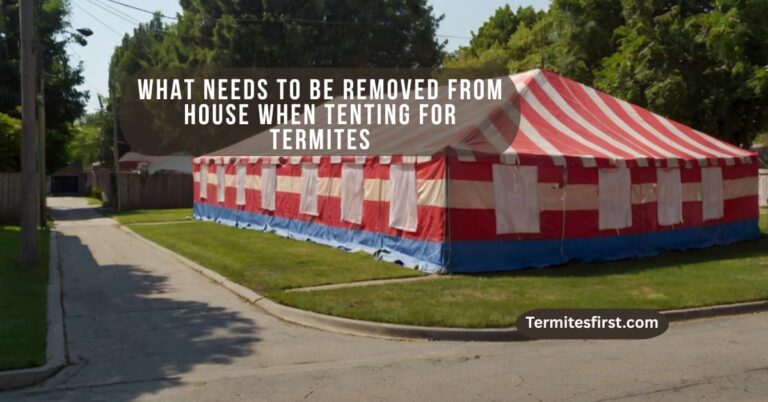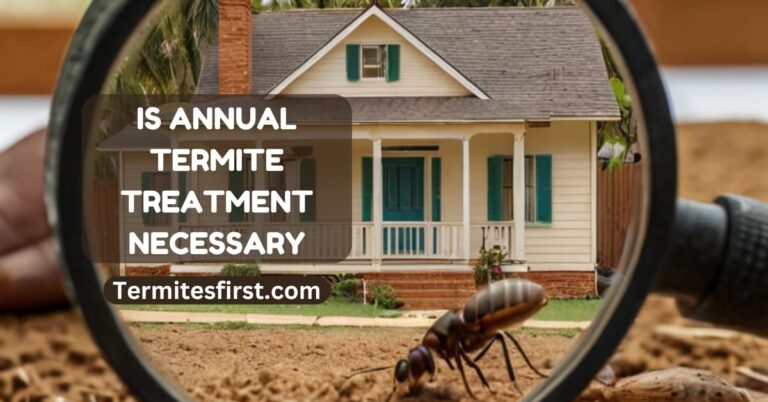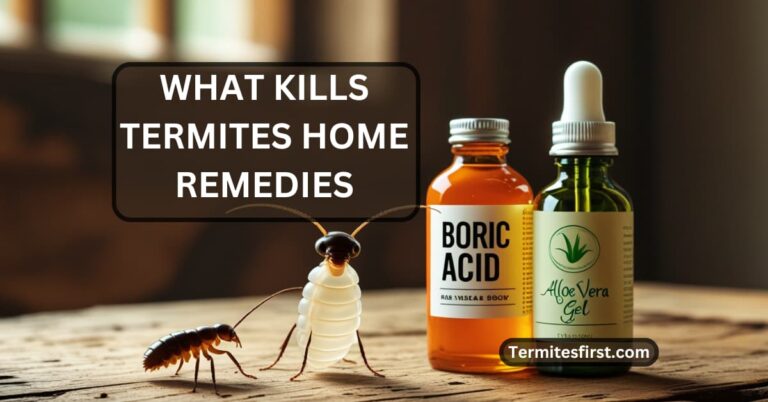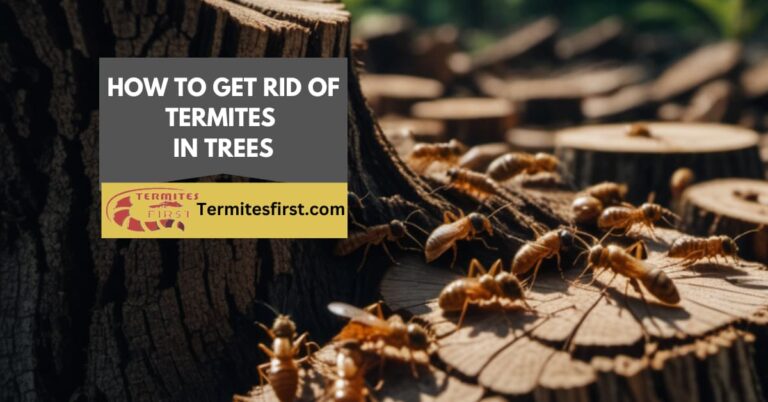How Do I Know If Termites Are Gone After Treatment?
Termite treatment is an important part of protecting your home, but determining whether or not the issue is really fixed isn’t always easy. Looking for signs like mud tubes, discarded wings, or wood damage can help you ensure that they’re gone for good. Preventing future infestations is crucial for maintaining a termite-free environment. Regular inspections help you know there are no new infestations, particularly in areas that have been treated. Employing professional tools such as moisture meters or monitoring stations adds even more confidence. Continued vigilance is the best way to ensure that your home continues to be safe from termites long after the treatment is completed.
- Look for evidence of both old and new termite damage, which may involve a close inspection of all wood surfaces. Check for new mud tubes, obvious feeding damage, or warping and discoloration in wood.
- Monitor treated areas regularly, and consider using devices such as moisture meters or infrared cameras to detect any new termite activity. Regular inspections are needed to verify the treatment has worked.
- Be aware of signs of previous termite activity, including hollowed wood or former droppings. If areas are left untreated or if the barriers are not effective, reinfestation can occur.
- No more mud tubes, wings, swarmers, or new droppings are telltale signs that termites have been eliminated. No live termites during a follow-up inspection is the most important piece of confirmation.
- Treatment effectiveness is usually 1-2 months. Continuing signs of termites or widespread damage to your structures should lead you to call in the pros.
- Prevent future infestations by scheduling regular inspections, using long-term treatments like bait systems, and maintaining property conditions to reduce moisture and seal entry points.
Understanding Termite Damage
Given the time and opportunity, termites can cause significant destruction, leading to serious termite infestations. Once the treatment has been completed, identifying old damage from new termite damage is crucial to prevent future termite invasions and ensure that the infestation is no longer active.
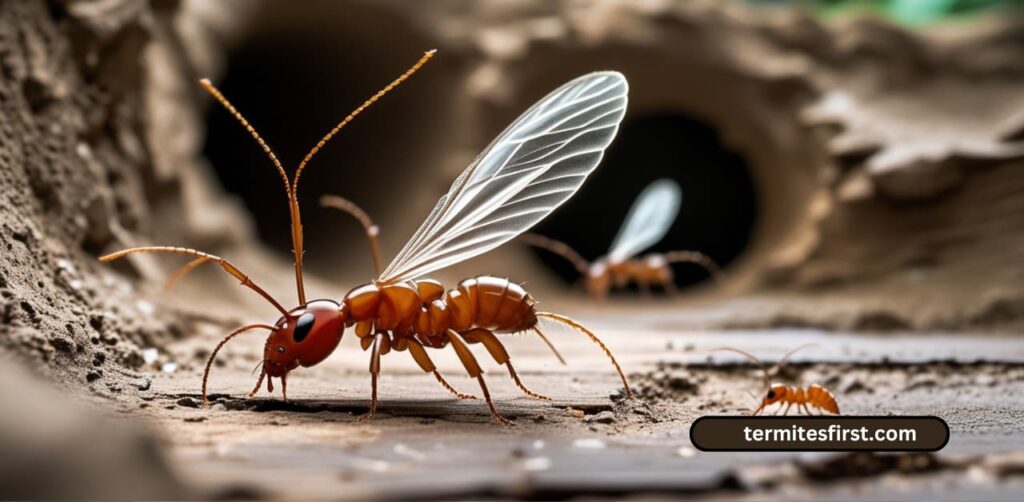
Differentiate Between Old and New Damage
The best way to understand termite infestations is to start with the fundamentals. Examine the damage to see if it’s old or new. Old damage appears lighter in color, as well as dry and brittle. New damage is white in color and usually has a more spongy texture, indicating a potential termite problem.
If you knock on wood and it sounds hollow, pay attention. The absence of new mud tubes or tunnels around suggests that an active termite infestation is no longer occurring in your home. Where termites had infested houses, they often created mud tubes to connect their colonies to food sources. If these tubes are absent, you can feel pretty confident that termites are gone for good.
A second sign is if you haven’t seen any swarmers or discarded wings. Swarmers are the reproductive termites that leave the parent colony to start new ones. If you are unable to see them, it’s probably because the reproductive phase in your region has concluded, indicating a lack of recent termite activity.
In much the same way, no new droppings, or frass, on the property can rule out that termites are active at this time. Watch for other structural clues as well. Damage such as wood blisters or galleries—tunnels in the wood—can compromise the strength of load-bearing structures and signal a serious termite infestation.
If these are not recent or if inspections reveal no live termites, it’s a strong indicator that the treatment has been effective. After professional termite inspections, pest control workers usually will trench the soil around the home’s foundation. They typically trench 6 inches deep and 4-6 inches wide, but apply termiticides at the rate of 4 gallons per 10 linear feet.
This detailed process goes a long way toward ensuring termites will not re-enter treated spaces, helping to prevent future termite invasions.
Identify Signs of New Termite Activity
Even post-treatment, you’ll want to keep an eye out for any new signs of activity. Proper inspections are essential. Here’s the bottom line. Fresh mud tubes or recent feeding marks on wood are a sure sign that termites are currently present.
Tools such as moisture meters or infrared cameras can help detect hidden signs. For instance, a moisture meter can be used to find moisture in walls where termites like to make their homes. If you notice ongoing damage, it may indicate that the treatment failed or needs to be reinforced.
Recognize Indicators of Past Termite Presence
Even though an active colony may no longer be present, past infestations can still be detected. Hollowed wood, old frass on the ground, or even old mud tubes can be a sign. If the house is left untreated, it can become a new hot spot for reproduction.
Reinfestation is likely too if colonies nearby just get in somehow. Proactive measures, such as annual inspections and continued treatments, are important to avoid this. Termites can consume a foot of a 2×4 piece of lumber in a little over 5 months, so staying vigilant is important.
It may take 3 to 8 years for serious damage to occur. By spotting the issue early, you can prevent thousands in damage later on.
Signs Termites Are Eliminated
Duration for Treatment to Work
When it comes to getting rid of termites, patience is a virtue. Even in the case of a successful treatment, expect up to one to two months before the treatment is fully effective. While this is happening, the chemical barriers or bait systems are killing the colony.
Bait stations draw termites to the bait, making them more likely to consume enough bait to die. As they go back to their colony, the bait disseminates through the whole population, but this takes time. Liquid termiticides create a protective wall around your home. They ingested it, and it caused them to actively kill themselves, as well as other termites that came into contact with this barrier.
The length of treatment time will vary widely. The size of the infestation, the species of termites, and environmental factors including humidity all play a role in determining how effective the treatment will be.
Knowing how long it could be before termites come back depends on the treatment used. Even though chemical barriers can be expected to last 5 to 10 years, bait stations require continuous upkeep to be effective. Other termite species like drywood termites are especially pesky.
Generally, you can’t expect to wipe them out with a single whole-house treatment. In cases of extreme infestation, additional treatments may be required, at which point the expertise of a professional is invaluable.
1. Absence of Mud Tubes or Tunnels
These mud tubes or tunnels are a sure indication that subterranean termites are at work. These pencil-thin tunnels frequently trace the edges of walls and foundations. They create a protected passageway for termites moving from their nest to search for food.
Once treatment is completed, one of the first signs to look for is the loss of these structures. If you notice active or recently formed mud tubes, the infestation is still active. This is an emerging problem that requires immediate action from pest management professionals.
When large structural damage is evident, a professional examination is especially important. Termites can hollow out wooden beams and weaken the integrity of a building, which may not always be apparent during a casual inspection.
In order to see concealed damage or activity, you typically require specialized equipment such as moisture meters or thermal imaging. That’s why professional help is key to in-depth evaluations.
2. No Visible Swarmers or Wings
Swarmers, or winged termites, are one of the most recognizable signs of an infestation. Their presence inside your home or outside on your property is an indicator there’s an active infestation.
The day after treatment, not seeing any swarmers or discarded wings is a good sign. If you want to make sure termites don’t come back, you need regular inspections to be key. Scheduling these inspections yearly can catch the first signs of termite activity before it becomes a serious infestation.
Long-term treatments, like baiting systems or liquid termiticides, provide long-term protection. Though bait systems require regular check-ups, liquid barriers can offer long-term protection for many years to come.
Keeping your property in its best possible shape is one of your best defenses against termites. For example, addressing moisture issues, sealing cracks, and removing wood debris can make your home less inviting to these pests.
3. No Fresh Termite Droppings
Termite poop, known as frass, appears as small mounds of sawdust or coffee grounds. These droppings are an unmistakable sign of drywood termites. Following treatment, a lack of new droppings around wood structures or furniture is a second sign that termites have been eliminated.
It’s important to identify the difference between old droppings from a previous infestation and new ones. New droppings show that an infestation is currently active.
4. Lack of Wood Blisters or Galleries
Wood blisters or small, raised bumps on wood are usually a sign of termite activity underneath the surface. These blisters begin to appear when termites start eating wood from the inside out, leaving just a paper-thin outer layer.
After treatment, the absence of new blisters or clear galleries (tunnels in wood) indicates an effective termite removal. Being vigilant about wooden structures, especially in highly moist or humid areas, is the best way to ensure this.
5. No Live Termites Found
Lastly, the most conclusive sign that termites have been eliminated is the lack of live termites. This is easily observable through targeted inspections of established infested areas, like crawlspaces, basements, or infested wood-furniture.
With the right professional pest control tools, you can be sure that there are no survivors left. Orkin designs termite treatment programs around your specific needs. Our extermination plans offer you both tranquility and lasting protection.
Assessing Treatment Effectiveness
Monitor Treated Areas Regularly
Post-treatment, we recommend periodic inspections of the treated areas to ensure that the termite infestation has been eradicated. While the treatment takes effect right away, don’t assume the termites will disappear by morning. It usually only takes a few weeks for them to clear up entirely.
While this is the best time to prevent them, you may notice signs of activity—termite swarms or termite wings, for example—at any time of year. This residual activity is reversible and may linger for up to four weeks. That doesn’t necessarily mean the treatment failed right away; it could just be the last couple of termites fighting back as their colony goes down.
I’ve found creating a timeline for periodic reviews can mitigate some of this burden and make the process feel less daunting. For example, weekly inspections for the first month is an easy and cost-effective way to monitor for any potential changes. Signs of an infestation may include live termites, mud tubes or damaged wood.
Those are major indicators of movement. Watch for any new damage or live termites in the coming weeks. If you don’t notice any, that’s actually a pretty good sign that the treatment is working! Keep in mind, full colony eradication typically takes one to two months. For very big colonies, the process can take much longer. That’s why consistent ongoing monitoring is so important.
Use Termite Detection Tools
Using termite detection tools can make your assessment much more accurate. For instance, I often recommend moisture meters and infrared cameras. Termites thrive in damp environments, so a moisture meter can help you identify spots where termites might return.
Infrared cameras, on the other hand, detect heat patterns that could indicate termite activity inside walls or wooden structures. A third tool to use is termite bait stations. These go beyond just getting rid of termites to monitor their activity.
In fact, professional exterminators often use these stations, replenishing the bait as needed on return visits. If you’ve chosen a liquid treatment, keep in mind that these are usually only effective for five years or less. Soil type, climate, and other factors can influence this timeline.
These challenges underscore why making detection tools a regular practice is the best approach for ensuring sustainable outcomes.
Check for Recurring Damage Signs
Of course, even with the best treatments, the possibility of termites returning is always present. That’s why looking for signs of repeated damage is a key step in the process. Hear hollow-sounding wood, see sagging ceilings or floors, or find small holes in drywall.
If you notice these signs, it may be a clear indication that termites are still hiding around your home. In urban or highly developed areas, the use of liquid treatments may not be feasible or even sustainable.
In such instances, it’s vital to work with a professional pest control service that offers routine inspection and treatment. Even after a successful CT, professional exterminators will continue to monitor the property for signs of reinfestation and reapply treatments as needed.
This extended warranty means you won’t be left to fight termites on your own.
Reasons for Persistent Termite Sightings

Incomplete Colony Elimination
It’s actually quite normal to spot termites after having a treatment done. This isn’t necessarily an indication of treatment failure, but it may indicate that the colony has not been fully eliminated. That’s because termites are very social, and their colonies—sometimes numbering in the millions—are usually located deep within walls or underground.
Even when a treatment succeeds in killing the vast majority of the colony, some members can survive, particularly if the queen is not killed. The queen also serves a crucial role in reproduction. As long as she lives, the colony can slowly recreate itself.
A second reason is the kind of treatment applied. Some approaches, such as bait systems, are more slow-acting, distributing poisons across the colony. This method may take weeks, or even months to completely collapse the whole population.
If only a section of the colony comes into contact with the bait, the rest of the termites will stay put. They’ll even hold off until the effects of the bait circulate through their colony. Some species of termites are simply hardier than others. Subterranean termites, for example, can live in underground tunnels miles away from treated zones.
This is the reason follow-up inspections and sometimes even re-treatments are required. Most experts recommend making regular appointments to make sure the colony has left for good.
Untreated Areas in the Property
Termites can be living in untreated areas of a home or business. They are particularly good at flushing out places that first treatment missed. This means checking for cracks in the foundation and concealed crawl spaces. An expensive treatment focused just on the outside perimeter would fail if it missed a nest of termites inside.
Consequently, termites can still walk around unchecked within your home. Moisture problems make perfect homes for termites too. Leaky pipes, humid basements, or water-damaged wood create a constant source of moisture, a necessity for termite survival.
By fixing these problems, you can make it less likely that termites will discover a new foothold. Environmental factors come into play as well. Firewood stacked within 20 feet of your home provides an open invitation to termites.
Likewise, vegetation planted near the foundation forms highways for these pests to access unprotected territory. Establishing a buffer zone goes a long way. For instance, make sure mulch is no closer than 4 inches from the foundation of the home.
Reinfestation from Neighboring Colonies
Treatments that completely eradicate one infestation may still fail, because termites can come back from nearby colonies. They are ever-changing, ever-moving, particularly during the swarming period. Winged termites, known as alates, leave their colonies to establish new ones, making this the best time of year to spot them.
Attracted to outdoor lights, they can end up landing close to your home, recreating the cycle anew. Homes in states with a large termite population are highly susceptible. Preventive measures include sealing cracks around windows and doors, ensuring that doors and windows close tightly, and maintaining proper drainage can make a difference.
Some species, like Formosan termites, are just relentlessly tenacious. They are capable of re-infesting homes in as little as five years!
Timeframe for Termite Eradication
Duration for Treatment to Work
Termite treatments don’t work the same for every house. It really depends on what route you decide to go with and how bad the infestation is. Unlike many other pest issues, professional treatments will almost always have an immediate effect. Within 24 to 48 hours of application, termites usually start dying.
This is especially important when addressing chemical treatments, which are specifically engineered to kill termites on contact and break down their colony structure. When you treat the soil around the perimeter of your home with a liquid termiticide, you create an instant barrier. Termites cannot cross this barrier without being harmed. The first effect is immediate and blatant.
Though, as we explained above, eradicating the entire colony can take weeks to months, particularly for larger or more established infestations. The other main termiticide application method, fumigation, is much more acute in its effects. This termite removal method includes tenting the house and pumping in tenting gas that seeps into the wood of the home and kills termites.
Once the process is done, the termites are gone. Overall time for complete eradication can depend on how complete the treatment was and whether all colonies were treated. Baiting systems work slowly. As more termites consume the bait and spread it throughout their colony, the entire colony is destroyed.
This method can take a few weeks to several months to reach its maximum efficacy. Yet, it remains one of the most targeted and cost-effective solutions.
How Long Before Termites Return
After treatment, the longevity of protection depends mainly on the type of treatment applied and the level of maintenance. A quality termite treatment should provide multi-year protection for a home. For example, chemical barriers are meant to last from 5 to 10 years.
These barriers form a protective barrier around your home, keeping termites from coming back inside. It should be understood that even the best treatments are not 100% guaranteed. Over time, things like soil movement, heavy rains, or landscaping can develop weak points in the barrier.
One weak link could give termites a chance to return. While the chance of termites coming back is there, that doesn’t mean that they will. With regular inspections and maintenance, you can help make sure the treatment lasts for years to come.
To start, consider increasing the frequency of professional inspections to every one to two years to help detect and mitigate any developing weaknesses. Control wood debris and moisture around your home to keep termites away. Additionally, close off possible access points to make your home less inviting to these intruders.
When to Seek Professional Help

Persistent Signs Despite Treatment
Even after an extensive treatment plan has been implemented, you may find evidence of termite infestations. This might look like visible mud tubes, discarded wings, or hollow-sounding wood. These indicators suggest that the original treatment probably didn’t eliminate the whole termite colony.
On the one hand, they could indicate the end of the old infestation. Termites are some of the most resilient pests around. A lone queen can lay millions of eggs annually, enabling colonies to bounce back quickly if they aren’t completely wiped out.
If you continue to find signs of a current termite problem in places that have been treated, it may be a sign that the infestation was originally overestimated. It can indicate that the chosen treatment method was not comprehensive enough to address the potential termite damage.
In circumstances such as these, it’s best to ask for help from a professional termite control company. Only trained experts are able to determine if residual termite activity results from survivors or the establishment of a new termite colony.
Companies such as Hybrid Pest Control focus on follow-up inspections and proactive treatments. They can provide a warranty on their service, ensuring you’re protected if termites come back. Enrolling in an annual termite inspection plan and preventative maintenance can protect your home and stop future termite invasions before they start.
Extensive Structural Damage Observed
Termites are known as the silent destroyer because they can cause a lot of damage to the structure of your home over time without being detected. If you notice sagging floors, buckling wood, or visible damage to support beams and wall supports, you need to move fast.
These are signs you should talk to a professional, plain and simple. These damages can be a sign of an ongoing infestation that needs more specialized treatment to prevent additional damage. If you notice an increase in creaky floorboards, take note!
If you notice unusual cracks in your walls, this is a sign termites are eating away at your home’s structural integrity. Only a professional pest control company can determine the level of damage.
Next, they will recommend the most effective treatments available, including Active Colony Elimination (A.C.E.) systems — the humane alternative. These treatments can directly kill active termites, saving you costly repairs by taking care of termites before they destroy your home.
Fixing the source of the problem right away not only makes your home healthier, it helps ensure a more stable home. Stop with the band-aid solutions and save face.
Need for Advanced Inspection Tools
Termites pretty clearly have their activity hidden quite far below the surface inside your home. That makes it difficult to identify on a cursory basis alone. Advanced inspection tools, like thermal imaging cameras and moisture meters, are usually needed to find hidden colonies.
These tools are able to accurately identify the most active termite zones, allowing pest control professionals to figure out the most efficient treatment plan. Thermal imaging can help identify termite nests based on temperature differences.
In the process, moisture meters can pinpoint areas of moisture that termites are drawn to. Professional inspections usually come equipped with these tools that are not generally in the average homeowner’s toolbox.
Hybrid Pest Control, for example, provides termite monitoring systems, which offer long-term protection. They’re good at addressing moisture problems and monitoring for infestations.
Consistent inspections performed by the professionals utilizing these new techniques can prevent you from spending thousands of dollars on repairs, all while keeping your home termite-free.
Preventing Future Infestations
Going the extra mile to ensure you don’t experience future termite infestations is imperative after you’ve treated them. No matter how well the initial termite infestation is managed, these pests will return if the conditions are right. Prevention requires vigilance, proactive long-term tactics, and careful management of your home and landscape.
Schedule Regular Inspections
Periodic inspections are one of the surest methods to protect your home and prevent termite infestations from coming back. Only a qualified pest control service can detect these hidden signs of recent termite activity. They search for mud tubes, hollowed wood, and discarded wings that you may not readily notice yourself.
Consider scheduling periodic termite inspections every six months to one year. This is a no-brainer, but particularly wise in places where termites are in abundance. If you reside in a warm, moist area, a current termite problem can establish itself very easily. That’s why it’s so important to inspect regularly.
A well-trained inspector will have access to technology such as moisture meters or infrared cameras that help identify undetectable infestations. These specialized tools rapidly identify trouble spots. With this early detection, you can address potential termite issues before termites have the chance to inflict catastrophic damage.
During inspections, professionals can check for conditions that attract termites, like excess moisture or wood-to-soil contact, and recommend changes to reduce risks.
Use Long-Term Treatment Options
When it comes to preventing future infestations, long-term treatment plans are key. Products such as baiting systems and soil treatments not only defend your home but do so for several years. The Active Colony Elimination (A.C.E) treatment also kills existing colonies, more than 99.99% of them, in fact.
In addition, it offers long-term protection of up to five years. Though the solution is effective, no solution is guaranteed to prevent them forever, so it’s smart to use a treatment in conjunction with other deterrents.
Baiting systems, installed around the perimeter of your property, can catch termites before they make it to your home. These systems are typically based on slow-acting toxins that termites transport back to their colony, eradicating the entire colony in a single, massive blow.
A preventive soil treatment can form a protective chemical barrier around your home’s foundation, lessening the risk of reinfestation. Talking through these possibilities with a pest control professional will allow you to select the best possible pest control approach for your home or business.
Maintain Property Conditions to Deter Termites
Maintaining your property in conditions that are hostile to termites is an easy but effective strategy for avoiding termite infestations. To begin with, keeping an 18-inch distance between the soil and any wooden elements of your house is imperative. This safe distance prevents termites from getting to your home without being detected and helps combat any potential termite issues.
Avoid piling mulch up against your home’s siding—keep it at least four inches away. That way, you remove the moisture that attracts termites. Keeping large plants and shrubs at least several feet from the foundation wall will increase airflow and help prevent moisture from collecting against the foundation, further reducing the risk of a termite problem.
If you bring any firewood home, store it at least 20 feet from your house. Just be sure to keep it raised off the ground to minimize their draw. For instance, preventing swarming termites from approaching your home by keeping outdoor lighting off at night is one effective way to protect your home from a current termite problem.
Lastly, sealing cracks and openings in your windows and doors creates an additional barrier that prevents termites from getting inside. Another simple but effective prevention step is keeping doors and windows closed during swarming season. These minor changes can go a long way toward making your home less hospitable to active termite infestations.
Conclusion
Termite treatments are really effective when you are patient and persistent. It does take some time to see results, but the right signs—a lack of new damage, a lack of live termites, reduced activity—are signs of progress. Routine monitoring inspections will assure you that your treatment was successful. When termites are not completely gone or signs are confusing, experts can provide insight and solutions. For one, they bring specialized expertise and tools to easily identify and target the problem.
Keeping termites from coming back is as important as removing them in the first place. Repairing leaks, sealing cracks, and storing wood away from the soil are building blocks for a solid defense. Simple steps today spare worry tomorrow.
Take a proactive and informed approach to keeping your home safe from termites. If you have any doubt or require assistance, consult the professionals. Preventing termites from invading your home is most definitely a job worth doing right.
Frequently Asked Questions
Examine your home for new signs of termite activity, such as mud tubes, droppings, or damaged wood, as these could indicate a current termite problem. If these signs cease, it’s an excellent sign the treatment was successful.
The duration for effective termite control varies from a few days to a few weeks, influenced by the treatment type and the size of the termite infestation.
It’s normal to see visible termites immediately after treatment; they are usually exposed to the termiticide during this period.
Get in touch with your pest control services pro as soon as possible. They can determine if the treatment worked and if not, advise on termite control next steps.
Inspecting your home for new signs of termite infestations, such as mud tubes, droppings, or damaged wood, is crucial for effective termite control.
Check your house every 3–6 months for signs of termite infestations to prevent future termite invasions.
Correct moisture problems, eliminate wood-to-ground contact, and keep wood mulch away from your foundation while regularly checking for termite infestations with a pest control professional.

